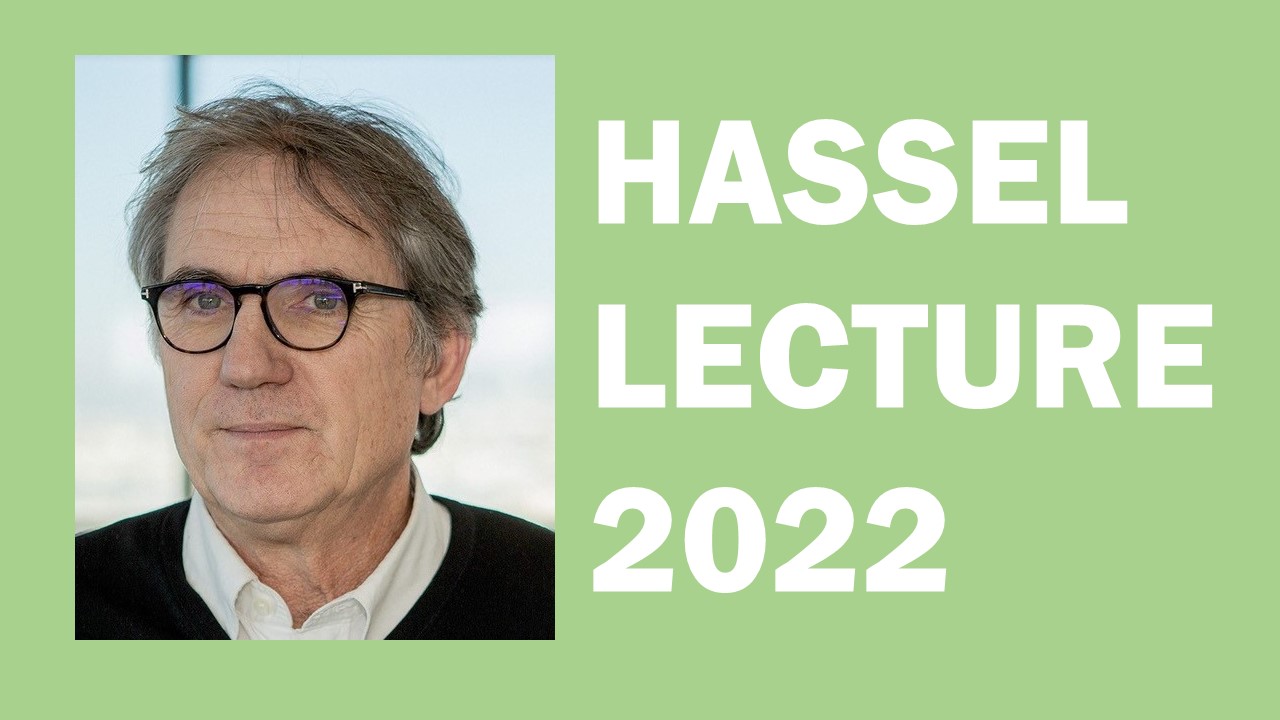|
Join us at the Department of Chemistry for this year’s Hassel lecture delivered by Professor Marc Fontecave. The Wednesday Hassel lecture is open to the public, but has a more specialised lens geared towards researchers and others with a background in chemical research. No registration is required prior to the lecture. |
|---|
What is the Hassel lecture?
The Hassel lecture is a yearly lecture organised by the Department of Chemistry at the University of Oslo in honor of Nobel Laureate Odd Hassel. The conference is organized by the Department of Chemistry, University of Oslo and the Norwegian Chemical Society (Norsk Kjemisk Selskap, NKS) that highlights especially innovative or current research presented by a distinguished invited lecturer.
Two lectures will be held by the Hassel Lecturer: The first day, Tuesday, the Hassel Lecture is targeted at a broad, non-expert in chemistry (as well as other natural sciences) audience. The second lecture on Wednesday is addressed to an audience that is more proficient in the area(s) of chemistry that are presently closest to the Hassel Lecturer.
You can find information about Tuesday's lecture here.
Who is Professor Marc Fontecave?
Marc Fontecave became Docteur d’Etat in 1984 from the University P. et M. Curie, Paris. He was a post-doc at the Department of Biochemistry at Karolinska Institute in Stockholm (1985-1986). After 20 years as Professor of Chemistry at University Joseph Fourier, Grenoble, France (1989-2009), he now hold a Professorship at Collège de France, Paris, as Director of the Laboratory of Chemistry of Biological Processes. He is a member of the French Academy of Sciences and of the Royal Swedish Academy of Sciences. His research interests span from catalysis and biocatalysis, bioinorganic and bioinspired chemistry to artificial photosynthesis and energy storage technologies (water splitting and CO2 valorization).
Abstract for Wednesday's lecture
Climate and environmental issues require the advent of an energy transition towards a new world, more economical, more electrical and less CO2 emitting. This transition will only be possible with massive investments in research and innovation in the fields of energy production, transport, industry and construction. Taking the case of France, we will discuss the current energy situation, the different scenarios for the 2050 trajectories and the scientific and technological challenges that we must face. Many of the addressed questions are relevant to comparable countries.
While developed in a number of directions, bioinspired molecular catalysis has been explored only very recently for CO2 reduction, a challenging reaction, of prime importance in the context of the energetic transition to be built up. This approach is particularly relevant as Nature teaches us that CO2 reduction is possible, at low overpotentials, high rates and large selectivity, and gives us unique clues to design and discover new interesting molecular catalysts. Indeed, based on our relatively advanced understanding of the structures and mechanisms of the active sites of fascinating metalloenzymes such as formate dehydrogenases and CO dehydrogenases, it is possible to design original, active, selective and stable, molecular catalysts. This novel class of catalysts consists of mononuclear Mo, W and Ni and as well as dinuclear Mo-Cu and Ni-Fe complexes, in which the metal ions are coordinated by sulfur ligands, more specifically dithiolene chelates mimicking the natural molybdopterin (MPT) cofactor. (Figure 1) This research is multidisciplinary as it implies detailed biochemical, functional and structural characterization of the inspiring enzymes together with synthetic organic and organometallic chemistry. The most important achievements in this direction, starting from the first report of a catalytically active biomimetic bis-dithiolene-Mo complex in 2015, are discussed in this lecture (1-4).
In addition, bioinspired catalysis can expand to active and selective solid catalytic materials, in which single metal sites can be assembled on a heterogenous surface in a configuration mimicking biological mononuclear metal sites, as reported recently (5,6).

Fig. 1: Active site of Carbon Monoxide Dehydrogenase (CODH2), molybdopterin (MPT) and an active bioinspired catalyst, [(bdt)Mo(O)S2CuCN]2- (complex 1).
[1]. A Bioinspired Molybdenum Complex as a Catalyst for the Photo- and Electroreduction of Protons. Porcher, J.-P.; Fogeron, T.; Gomez-Mingot, M.; Derat, E.; Chamoreau, L.-M.; Li, Y.; Fontecave, M. Angew. Chem. Int. Ed. 2015, 54, 14090–14093.
[2]. Pyranopterin Related Dithiolene Molybdenum Complexes as Homogeneous Catalysts for CO2 Photoreduction. Fogeron, T.; Retailleau, P.; Chamoreau, L.-M.; Li, Y.; Fontecave, M. Angew. Chem. Int. Ed. 2018, 57, 17033–17037.
[3]. Nickel Complexes Based on Molybdopterin-like Dithiolenes: Catalysts for CO2 Electroreduction. Fogeron, T.; Retailleau, P.; Gomez-Mingot, M.; Yun, L.; Fontecave, M. Organometallics 2018, 38, 1344–1350.
[4]. A Bioinspired Molybdenum–Copper Molecular Catalyst for CO2 Electroreduction. Mouchfiq, A.; Todorova, T. K.; Dey, S.; Fontecave, M.; Mougel, V. Chem. Sci. 2020, 11, 5503–5510.
[5]. Electrochemical reduction of CO2 catalyzed by Fe-N-C materials: a structure-selectivity study. Tran Ngoc Huan, N. Ranjbar, G. Rousse, M. Sougrati, A. Zitolo, V. Mougel, F. Jaouen, M. Fontecave, ACS Catalysis 2017, 7, 1520-1525
[6]. Electroreduction of CO2 on Single-Site Copper-Nitrogen-Doped Carbon Material: Selective Formation of Ethanol and Reversible Restructuration of the Metal Sites. D. Karapinar, Ngoc Tran Huan, N. Ranjbar Sahraie, D. W. Wakerley, N. Touati, S. Zanna, D. Taverna, L.H. Galvão Tizei, A. Zitolo, F. Jaouen, V. Mougel, M. Fontecave, Angew. Chem. 2019, 58, 15098-15103
